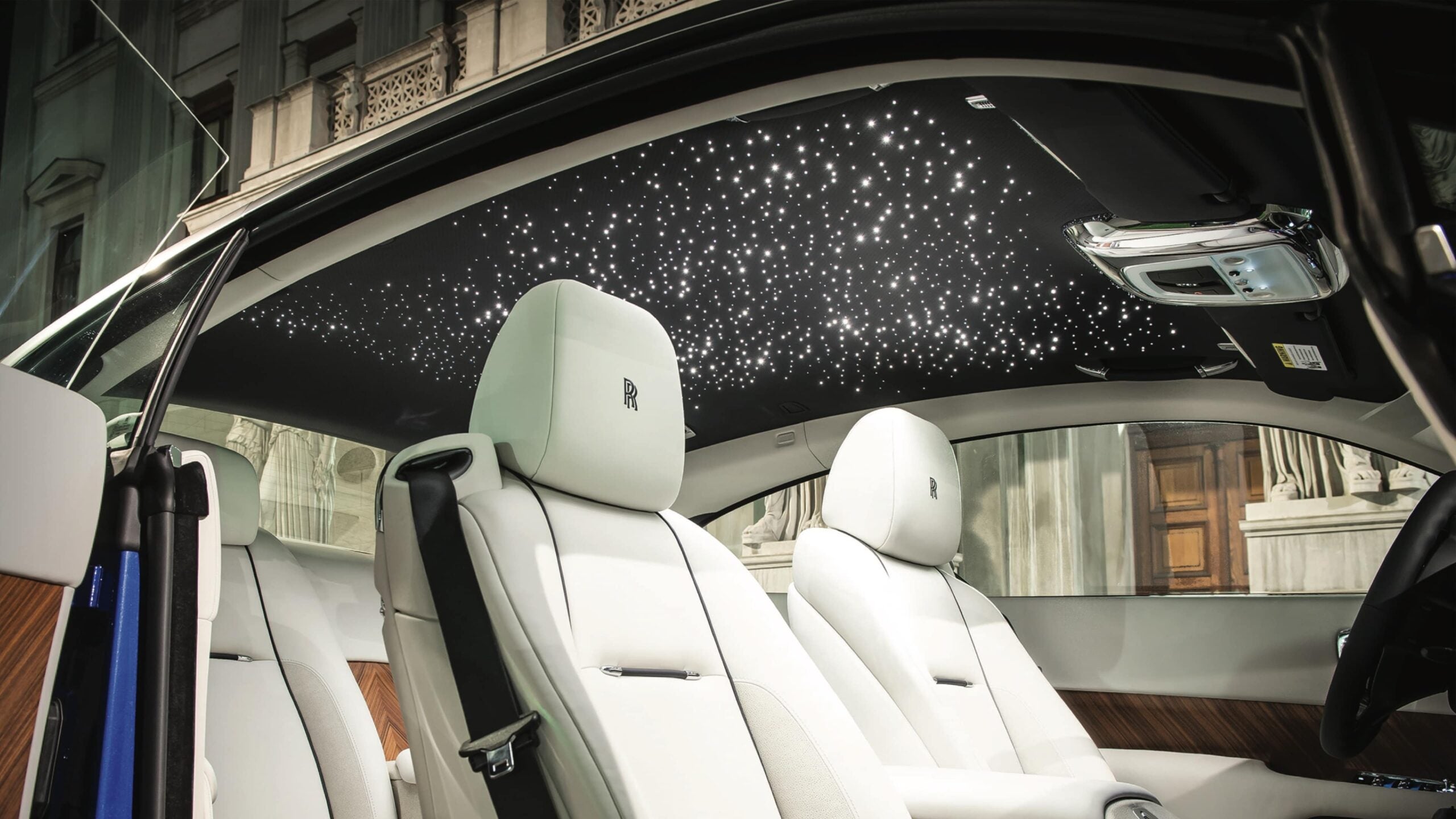Ambient lighting is a divisive feature in new cars. Some people (like myself) love the vibe it brings to a car interior, and I generally dim it down to a level I find enjoyable. Some folks can’t stand any lighting in the interior, and their perfect car is one with Saab’s Night Panel. But there is one universally cool bit of ambient lighting: the Rolls-Royce Starlight roof. This is how it looks behind the headliner.
And it’s become a popular mod in the aftermarket. In Los Angeles, you can go to any car meet and find an array of cars with redone headliners sporting twinkling lights. Rolls-Royce did it first and made it so cool that it's part of popular culture. Thus, everyone with a saggy headliner in their project car does it. Hell, even I considered it when I had my 2010 Volkswagen GTI. This video shows a production clip, but there's a better video on Facebook here.
It’s simple enough to do in the aftermarket because it’s a single light source with strands of optical fiber fed into the headliner complete the “star” effect. The real-deal Rolls-Royce stuff works largely the same way, except it uses multiple light sources to resolve extra effects like shooting starts, slightly brighter star constellations, or anything the owner requests. According to the automaker, customers can fully customize the starlight roof down to colors, patterns, and animations. It’s a different level to the stuff you can get on Ebay.
Rolls uses anywhere from 600 to 2,900 fiber optic strands and they also use a little attachment at each star point to diffuse the light. Again, it’s a totally different ballgame to what I could do at home. There’s real craftsmanship here and it's incredibly neat. Perhaps someone could replicate the multiple light sources and diffusion at home, but it would take some custom stuff like Arduinos and coding to be at that level.
Still, it’s neat to see how an automaker does it compared to the aftermarket. It’s intricate and cool.
Got a tip? Email [email protected]









